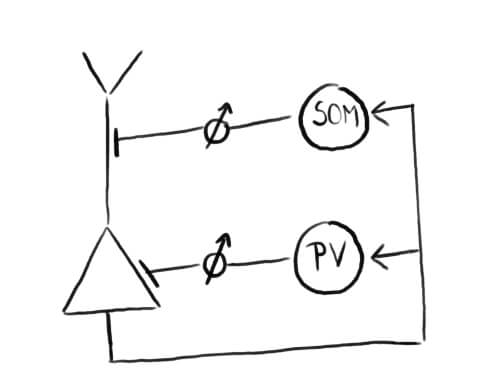Burst Control in Cortical Circuits
Back to ResearchFilip Vercruysse
The existence of specialized mechanisms for burst generation in pyramidal cells (PCs) suggests that bursts are likely to be an important temporal feature of neural signals. In L5 PCs bursts occur at a low, but consistent rate, and are thought to arise from active dendritic processes. Given that burst activity relies on dendritic threshold mechanisms, it appears likely that low burst activity require homeostatic control, but the underlying mechanisms are not resolved. In this research project we model a biologically inspired circuit diagram of a self-organized microcircuit with different inhibitory cell types and plasticity rules to control the burst and population rate of PCs. Our work shows that inhibitory plasticity rules may serve as building blocks to self-organise complex network architectures and allows us to investigate coding properties of bursting units without the need for tuning of input or noise levels.


